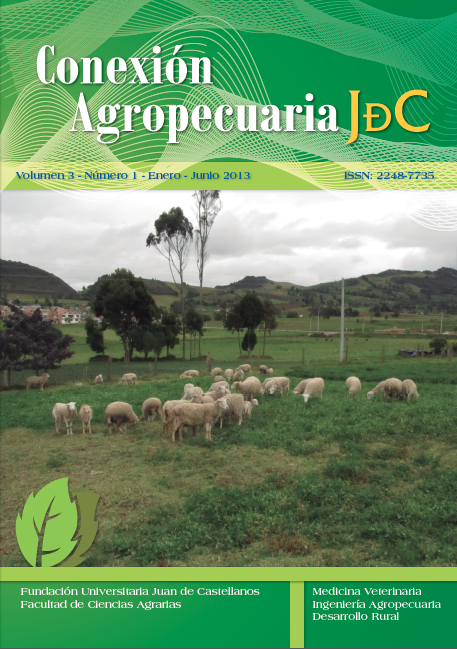ANAL ATRESIA ASSOCIATED TO URETHRORECTAL FISTULA IN A GIANT ANTEATER Myrmecophaga tridactyla AT THE OCARRO´S BIO PARK (VILLAVICENCIOCOLOMBIA)
Keywords:
congenital malformation, organophosphate, anteater, rectourethral fistulaAbstract
Congenital malformations have been found in humans and in some domestic species, however in wild species, reports are limited. The knowledge of these illnesses in wild fauna has not been documented; neither it is epidemiological behavior or casuistic level. The case presented in this article was presented in a neonatal female who belongs to the Myrmecophaga tridactyla species. Specifically, this wild animal was born in the Ocarros Biopark, Villavicencio- Colombia, their final diagnosis was type I anal atresia.
Author Biographies
Rosa María Viviana GÓMEZ-CARRILLO
M. V. Z. M.Sc. (c)
ICOMVIS, UNA
Adriana Patricia ROJAS-RODRÍGUEZ
M. V. M.Sc.(c)
Directora técnica y científica del Bioparque los Ocarros
Julián GARCÍA-TISNES
M. V. Z.
Coordinador DSBA Bioparque los Ocarros
BELTRÁN-MARTÍNEZ Paola Andrea
M.V. Z.
References
ASTWOOD, J., CASAS, C. & OJEDA, S. 2010. Notas sobre el comportamiento de cortejo de apareamiento de Myrmecophaga tridactyla bajo condiciones Ex Situ. Edentata 11(1): 34-43.
BARR, B. & ANDERSON, M. 1993. Infectious disease causing bovine abortion and fetal loss. Veterinary Clinics of North America. Food Animal Practice 9: 343-368.
DEL VALLE, S. & HALLOEY, M. 2003. El oso hormiguero Myrmecophaga tridactyla: crecimiento e independización de una cría. Rev. Mastozoología Neotropical 10 (2): 323-330.
DENOVO, R. 1997. Estreñimiento, tenesmo, disquecia e incontinencia fecal. En: ETTINGER, S & FELDMAN, E. (ed.), Tratado de medicina interna veterinaria. Enfermedades del perro y el gato. Inter-Médica, Buenos Aires, 1695-1709 pp.
ELLISON, G. 2010. Diagnóstico y tratamiento quirúrgico de la atresia anal. VetPraxis. Disponible en http://www.vetpraxis.net/2010/05/11/dianostico-ytratamiento-quirurgico-de-la-atresia-anal/. Accesado: 25/10/2011.
ESPINOSA, C. 2011. Angiogénesis placentaria de los animales domésticos. Revista Veterinaria 22(2):131-138.
FELIPE, A. 2003. Introducción a la teratología: el estudio de las malformaciones congénitas en medicina veterinaria. Revista Electrónica de Veterinaria, España, 4(4). Disponible en http://www.veterinaria.org/revistas/redvet/n040403.html. Accesado: 18/07/2011.
GONZÁLEZ, S. & ALBORNOZ, A. 2004. Malformaciones congénitas en recién nacidos hijos de madres adolescentes en el HGOIA. Rev Ecuat Pediat, Ministerio de Bienestar Social. Quito.
GUAIMÁS, L., AGUILAR, N. & KOSCINCZUK, P. 2008. Resolución quirúrgica de una atresia anal asociada a fistula rectovaginal en un cachorro. Hospital de Clínicas, Facultad de Ciencias Veterinarias, UNNE, Argentina.
HOLDEN, S., COX, J., KESTERTON. I., THOMAS, N. 2006. Fanconi anaemia complementation group B presenting as X linked VACTERL with hydrocephalus syndrome. Journal Medicine Genetics 43(9):750-754.
LEVINE, F. & MUENKE, M. 1991. VACTERL Association with high prenatal lead exposure: similarities to animal models of lead teratogenicity. Pediatrics 87(3) :390-392.
MAYOR, P. & LÓPEZ, C. s.f. Atlas de anatomía de especies silvestres de la Amazonía peruana. Disponible en: http://atlasanatomiaamazonia.uab.cat. Accesado: 25/06/2013.
MIRANDA, F., SOLÍS, M. & JIMÉNEZ, I. 2006. Manual clínico para el manejo del Oso Hormiguero Gigante (Myrmecophaga tridactyla). The Conservation Land Trust. Proyecto Tamandua. 26pp.
NIEBAUER, G. 1996. Fisiopatología y clínica quirúrgica en pequeños animales Bojrab MJ, ED., Inter-Médica 2°, Buenos Aires.
PAPAZOGLOU, L. & ELLISON, G. 2012. Atresia Ani in Dogs and Cats.A bird´s-eye view of veterinary medicine, Croatia. Disponible en http://www.intechopen.com/books/a-bird-s-eye-view-of-veterinary-medicine/atresia-aniin-the-dog-and-cat. Accesado: 12/11/2012.
PAPICH, M. & DAVIS, L. 1986. Drug therapy during pregnancy and in neonate. Veterinary Clinic North America 16: 523-537.
PIMENTEL, L. CORREA, F. & GARDNER, D. 2007. Mimosa tenuiflora as a cause of malformations in ruminants in the Northeastern Brazilian semiarid rangelands.Veterinary Pathology, Washington 44(6): 928-931.
PINHEIRO, R., GOUVEIA, A., ALVES, F. & HADDAD, J. 2000. Aspetos epidemiológicos da caprinocultura cearense. Arquivo Brasileiro de Medicina Veterinária e Zootecnia, Belo Horizonte 52(5): 534-43.
PUGH, D. 2004. Clínica de ovinos e caprinos. ED. Roca, São Paulo 513pp.
ROTTA, I., TORRES, M. & MOTTA, R. 2008. Diprospia em bovino (Bovine diprosopus). Arquivo Brasileiro de Medicina Veterinária e Zootecnia, Belo Horizonte 60 (2):489-491.
SUMANO, H. & OCAMPO, L. 2006. Farmacología veterinaria. ED. McGraw- Hill 3°. México D.F.
URDANETA-CARRUYO, E., HERNÁNDEZ, R., FLÓREZ-ACOSTA, A., SOSA, D. & GRECO, M. 2010. Daño renal agudo en un recién nacido con riñón único y asociación VACTER. Revista Mexicana de Pediatría 77(6):253-256.
WYKES, P. & OLSON P. 1993. Vagine, vestibulo and vulva. In: Slatter DH (ed.) Textbook of small animal surgery, 2nd. Saunders, 1308-1316pp.




